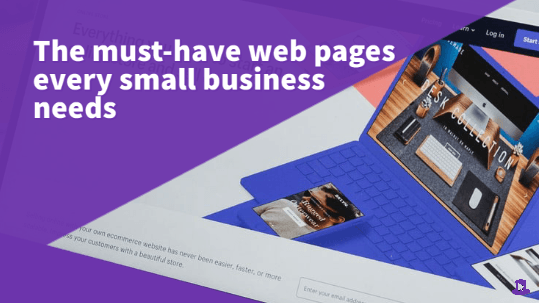
The must-have web pages every small business needs
A good vision can yield good results. Having a website has never been easier, with ever growing options to get online, making a decision on how to start your own website is a tough decision for many small businesses. However, starting a page is only the beginning. What do you add and where? In this post, we will try our best to give you a basic outline of the pages needed for any business website. First, realize that a website is an extension of your business. It’s a virtual presence of your work and in some cases, the first thing customers see when searching for you. For more on the benefits of a website, check out this (blog post)
1. Home Page
This is the landing page to your site. When customers enter your URL into their web browsers, this is the page that loads up first. This page should be a highlight of your business. Try to make your best impression with a good presentation. Use photos, feature the latest articles in your page, or showcase your most popular services. The goal of this page is to give users of your business at an overview of what it is that you do. There is no need to go into in-depth detail about your services, this page is the portal that will direct your customers to the rest of your website.
Note because this page is the most important, it will likely be the one that needs the most updating. For example, an important notice like hour changes are essential for this page. If you feature photos on your home page try to update them frequently as well. Try to dedicate at least a few hours once a month to keep this page relevant.
2. Services
This could be the most important page for prospective customers. Let them know what to order and what to expect from your business. This page can include a detailed explanation of what your business specializes in. If possible, showcase previous accomplishments along with relevant certifications in the industry.
3. About
Tell your customers your story. This can be your greatest asset as a small business. Set your self apart from your competition with a brief description about your business. Here you can insert your mission statement, your basic goals, and any community involvement your organization does. Let people know why you are the better choice for their everyday problems.
4. Contact
Let customers get in touch with you. Although you may have your phone number, physical address, social media accounts, etc on every page. Designate a “contact page” for detailed contact information. The goal of this page is to lead customers to action. Tell them what email address they need to contact for more information. Show them how to book an appointment either through a form, email, or tell them what number to call. Give directions to your shop with an interactive map of your business. Visitors of this page are likely interested in what you have to offer. Keeping updated information of relevant email addresses/phone number is highly important.
There are many other pages you can add based on your business needs. These pages are not set in stone, nor are they the only options you have available. Note that you can always add or delete any as you please. These are simply a few to get you started.
Full Disclosure: Top Hat Central specializes in web design for small business. The goal of this article is to give a brief outlook on what we’ve seen works best for local businesses. For more information on our services click here.
Topic Website Tips